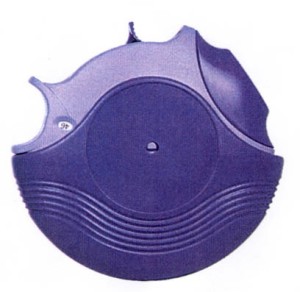Last month saw an interesting case before the UK High Court in relation to a counterclaim to trade mark infringement for a declaration that the EUTM in question was invalid as the registration was neither a “sign” nor “capable of being represented graphically” within the meaning of Article 4 of Council Regulation (EC) 207/2009) (the “EUTM Regulation”).
My observations are (1) that with simple changes a mark of this sort should be able to avoid this fate and also (2) the provisions in the EUTM Regulation on choice of forum arguably enabled the defendant to get a decision on validity of an EUTM in the court of a member state whose case law is such that there may well have been a different result if this had been a straight invalidity action at EUIPO.
The case was Glaxo et al v Sandoz Limited ([2016] EWHC 1537 (Ch)). It was a request for summary judgement by the defendant Sandoz in respect of their counterclaim to infringement and by extension that the infringement case be dismissed. It was noted in the judgement that there was litigation involving the same registration in a number of EU countries and before the EUIPO.
The EU registration in question was administratively classified as a “colour mark” in Class 10 covering “inhalors” with the above single image the graphic representation and an accompanying description of “The trade mark consists of the colour dark purple (Pantone code 2587C) applied to a significant proportion of an inhaler, and the colour light purple (Pantone code 2567C) applied to the remainder of the inhaler.”
The judgement contains a useful summary of the case law on Article 4. It included of course the Sieckmann criteria on how the trade mark must be identified (clear, intelligible, specific, precise etc.) but also focused on the case law on colours including CJEU case of Heidelberger and the UK Court of Appeal decision in Nestle v Cadbury (“Cadbury Purple”).
The judge held the registration invalid. The combination of the colour claim, image and the description did not limit the trade mark clearly and unambiguously to just one sign.
This was perhaps not surprising given this registration contained the kind of description in relation to proportion of the colour applied to the product that had been rejected by the Court of Appeal in Cadbury Purple (albeit of course that this registration was filed well before that judgement and at the time was acceptable EUIPO practice).
Taking a step back it seems to me that the image itself describes the shape of a pretty distinctive looking inhaler and if one could go back in time and if taking the trade mark route (and not say the registered design route) an application without the description for this as a 3D trade mark using this image (and perhaps some extra views) would result in a valid registration.
A second observation is of course that Cadbury Purple is UK only case law. At the UKIPO and before a UK court this will clearly be good law and old style descriptions for example for colour marks will not now get through or survive challenge. But EUIPO is not bound by this judgement and whilst bound by the CJEU case law I am not sure we know for sure that EUIPO would have found this mark invalid and certainly not sure that they view such descriptions as such clear problems as the UK courts and IPO now will post-Cadbury Purple. Whilst clearly not privy to all the facts here, and bearing in mind that Sandoz had been sued in the UK so it is logical to counterclaim there too, I feel sure that they would have been conscious of the specific position in the UK on this colour issue post-Cadbury Purple and they have arguably got a decision in the more favourable forum on this issue than say at the EUIPO. Another interesting aspect of the subtleties within the unitary system and harmonised law.
_____________________________
To make sure you do not miss out on regular updates from the Kluwer Trademark Blog, please subscribe here.



